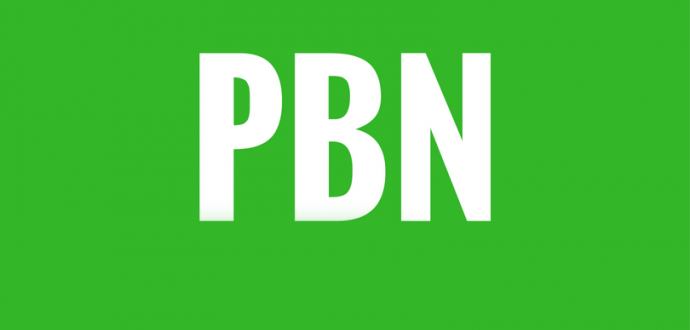If you’re new to SEO – Private Blog Networks (the scary words) can seem complicated, hard, and obscure. Yes, many SEOs love this technique, so is it worth it?
The fact is – there’s been a lot of confusion about PBNs and if they are effective in 2019.
That being said, you’re probably wondering, ‘What are private blog networks, and how do I use them?”. Well, this simple guide will demonstrate all ins and outs behind PBNs & how to make sure your network is safe and rock solid.
What are private blog networks?
PBN (aka Private Blog Network) is the set of domains owned by a company or an individual. All these websites link back to a single central blog to improve its rankings.
PBN, in many ways, works like a pyramid.
You build a network of sites that all are linking back to 1 primary (central) website. Why? Because Links are a valued Internet currency. They are a superb ranking element (even in 2019).
In this case, are private blog networks (PBN) safe?
This all might sound confusing for a novice, but don’t worry – later in the article, we will decipher everything about using Private Blog Networks for ranking and how risky they are.
Are private blog networks (PBN) safe?
Yes. If you’re careful.
PBNs are risky. But if you set them right – you’re protected. Setting them right means using different hosting accounts, different templates, never re-link your ‘secondary’ websites between each other and many other techniques that we will cover down below.
All in all, most Industry experts agree that you’re intact and out of danger if your backlinks from PBN are somewhere in the range of 5-20% of all your backlinks. This doesn’t mean you can’t use more – you can, but you need to be even more careful and wipe out all footprints.
Therefore, the real question is, ‘Do private blog networks work in 2019? Are they worth the risk?”. Again – yes, but you have to be smart about using them.
Are private blog networks in danger of being found by Google?
Let’s face it. PBNs are against Google terms & conditions. You might earn a penalty if you get exposed. But the truth is, if you’re being smart about using Private Blog Networks for ranking – your chances of getting busted are low.
What should you look out for?
- all your websites should have different hosting accounts (different IPs)
- different contact information for each and every one of your websites, but don’t hide your WHOIS info
- use different Wordpress themes & different design each time!
- Duplicate content & same images is a NO.
- Never interlink your ‘secondary’ websites, never.
- Don’t spam links from your PBN to your central website.
- Remember, you’ve been warned. ;)
Do Private Blog Networks Work?
Are Public Blog Networks still valid and effective? Absolutely.
PBNs are an all-popular link building technique for many SEOs. The domain purchasing market is massive. Why? Because this method, though frowned upon by Google, still works (pretty well, to be honest!) As long as backlinks are referred to as a superb ranking factor, PBNs should stay as powerful as ever.
Using Private Blog Networks for Ranking
There’s a simple formula for releasing your private blog networks into the wild. Just below, you will see a quick overview. We will carefully explain every point!
- Purchase an expired domain
Domains expire every day. Many a time, their owners decide not to prolong the registration. As a result, anyone can purchase it. Quite often, this can be an excellent trusted and reputable domain with a nice backlink profile. SEOs acquire them in order to publish links to their website, that they are promoting. Typically, you can get a domain for 10-15$ dollars.
Expired domains are likely to pass on good link juice to your primary website, which is why PBNs are so powerful. But before you make a purchase, make sure to check its domain rating, backlinks profile, as they are useful criteria. Always use the Wayback machine to see how the domain in question looked like in the past.
The perfect scenario is when you find a right domain that’s relevant to your niche (say that you a pottery store and you find a website about kitchen utensils. Pretty close, right?). In this case, you can avoid re-theming your website.
- Set up hosting
This gets tricky. The truth is – you need to set up different hosting accounts for each and every website that you own. This is done to prevent the online world, Google included, from knowing about what you do in the shadows.
Popular hosting accounts are CloudFlare, BlueHost, HostGator, GreenGeeks, ASmallOrange, DigitalOcean, Amazon Web Services. There’s no denying it – they might be pricey. But the safest way is to use hosting with a good rap like all of the above.
- Make sure your website looks legit
You need to make it look like your just-set website is 100% legit. It shouldn’t look like make-believe. This means you should have some good content on it, WordPress plugins, and a solid theme as a starter’s pack.
Don’t worry. You don’t have to shell out on some sky-high website templates. Free WordPress themes will do. There’s a caveat also. If you have many domains in your PBN – it’s best to use a different WP theme for each of them.
As I mentioned earlier, You’re in luck if the domain is related to the same niche you’re in. But what if your just acquired website is absolutely irrelevant to your business? In this case, re-theming your website is a natural thing to do.
For example, let’s say you were able to get a nice cleaningworks.com domain which initially belonged to the cleaning company that went out of business. But what if your niche is technology and software? In this case, you might want to re-theme it into the website that reviews computer cleaning software or some professional cleaning equipment.
- Creating content for your PBN
Disclaimer: you need to create good, high-quality content for your PBN. Your new website shouldn’t look spammy, poorly-written, or else. Create at least 2-3 pages. Thumbs up for creating more than that. Your goal is to establish a website that looks like a real thing. Don’t forget to set up an ‘About’, ‘FAQs’, and ‘Contact us’ pages. Use a new logo, set up a nice-looking menu, choose a beautiful & simple WordPress theme.
Why Private Blog Networks Are so Powerful
To put it simply – PBNs are Swiss Army Knives of SEO. They have lots of perks if you compare them to other link building strategies. Here are just a few:
- You are in the driver’s seat
First off – if you are using PBN, you control all your SEO efforts on your own. You’re in charge of everything: purchasing of high-profile domains, setting up your new relevant and polished PBN blogs, publishing links, and choosing anchor text.
- Valuable links from well-established domains
Using PBNs, you can get fantastic links, fast. If you stick to the standard link building strategies like outreach, for instance, it might take you longer (frequently, more expensive) to receive backlinks. In addition, if you have 2 or more money websites, you can use your PBNs to promote them all (carefully, of course).
Why Private blog networks are so powerful? Because you’re using the authority of the already established, older websites. They have been around for a while. Backlinks from sites like these are great for your SEO.
How to Get Backlinks from Private Blog Networks
When using Private Blog Networks, you should always be on the lookout for great domains. There are plenty of platforms that help with this (ExpiredDomains.net, DropCatch.com, NameJet, Go Daddy Domain Auctions). But high-quality domains are going like hot cakes on the market. Therefore, you need to stay alert all the time.
After you purchase a domain, set up hosting and prepare good content, it’s time to include backlinks to your ‘central’ blog. All things considered, the homepage is probably the best place. Since it has a higher page rank, this link will have more value. But it might look suspicious if you just leave a backlink to your primary blog on the homepage. That’s why try to find a Wordpress theme where blog posts aren’t cut off from the page and displayed in full.
What if you want to link back to a few ‘major’ websites, not just one? In this case – create separate blog posts for each link. Make sure to include a couple of other URLs to just to make it seem natural.
What anchors should you use? FYI – anchor is the hypertext in your link, it alone serves as a supreme ranking factor. For starters, your anchors shouldn’t match. This means that you can’t repeat the same anchor twice (brand names are exceptions). The rule of a thumb is to use variations of your keyword.
Final thoughts
Many users online probably have this question, ‘Are Private Blog Networks still valid?’. The obvious reply is yes. But you have to set up your PBN properly. Fingers crossed, this guide helped you understand how to get backlinks from Private Blog Networks to your best advantage. :)
All in all, don’t put all eggs in 1 basket. The truth is – if you’re using PBNs exclusively, you’re skating on thin ice. PBN can be uber effective. But don’t rely on this technique only. Avoid overkill at all cost. Or you will be stuck in the never-ending rabbit hole. If it gets potentially hazardous for your rankings (anything can happen), you could have something else up your sleeve. Start with a good, even brilliant content marketing, build connections in your niche, do outreach.
In the end, it’s your choice, Neo. Should you use private blog networks for endorsing your business or not? The fact is: PBNs are powerful, effective, and risky. Are you willing to take the risk?


